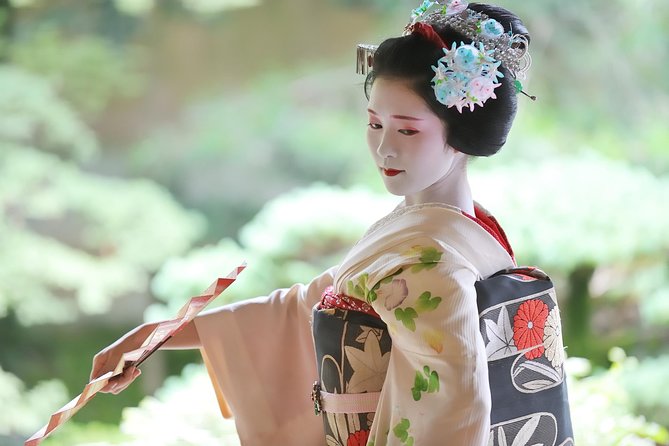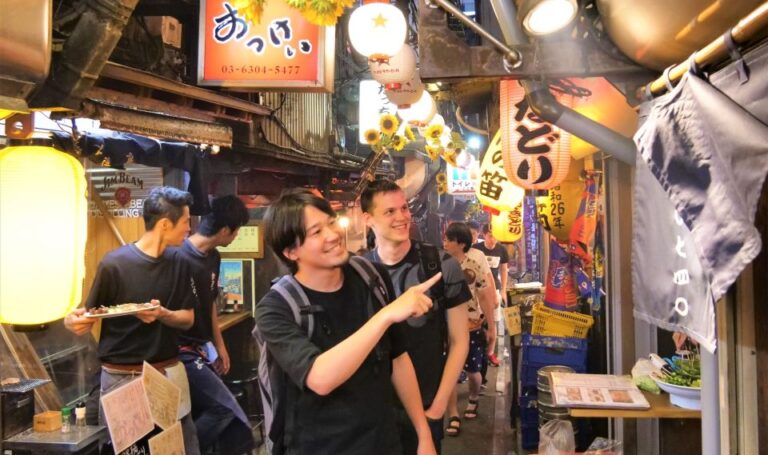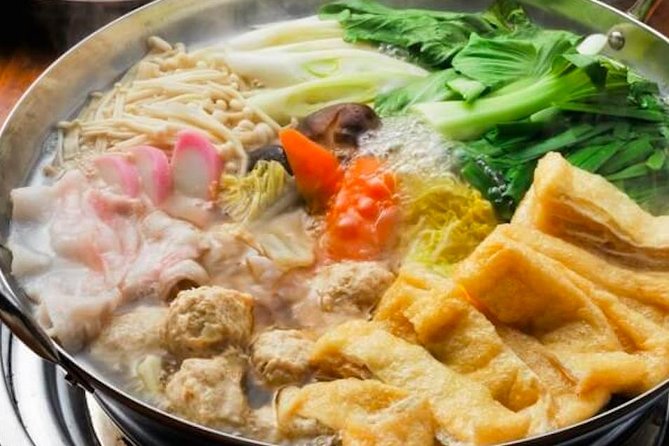As the savory aroma of freshly cooked Takoyaki wafts through the air, one can almost hear the rhythmic sizzle of the batter as it transforms into golden perfection. But what makes these octopus-filled delicacies so irresistible? Explore the intricate process of crafting Takoyaki, from the selection of premium ingredients to the precise technique required for that signature round shape.
Stay tuned to uncover the secrets behind the origin, variations, and best-kept tips for mastering the art of Takoyaki. Prepare to embark on a culinary journey that promises to tantalize taste buds and ignite a passion for Japanese street food.
Quick Takeaways
- Takoyaki originated in Osaka, Japan, in the 1930s, becoming a symbol of the city’s culinary heritage.
- Takoyaki offers a fusion of traditional and modern flavors, inspiring creative variations like cheese and kimchi Takoyaki.
- Takoyaki has evolved from a street snack to a beloved delicacy globally, celebrated through festivals and artistic presentations.
- The dish’s adaptability and nutritious ingredients make it a popular and timeless favorite among foodies worldwide.
Origin of Takoyaki
Takoyaki, a popular Japanese street food, originated in Osaka during the 1930s, revolutionizing the way people enjoy savory snacks on the go. Its cultural significance lies in being a symbol of Osaka’s culinary heritage, reflecting the city’s vibrant street food culture. Takoyaki holds health benefits as well, with its protein-rich octopus filling and balanced ingredients offering a satisfying and nutritious snack option.
As a beloved street food, Takoyaki has transcended its origins to inspire various fusion dishes globally. From Takoyaki pizza to Takoyaki burritos, chefs worldwide have embraced this iconic dish, infusing it with their creative culinary twists. This evolution showcases the versatility and adaptability of Takoyaki, making it a favorite not only in Japan but also in international food scenes.
Ingredients Used in Takoyaki
Utilizing a batter made from flour, eggs, and dashi broth forms the base for the delectable takoyaki. This savory batter is mixed with a variety of ingredients to create the unique flavor profiles that make takoyaki a beloved dish in Japan and beyond.
Some key ingredients used in takoyaki include:
- Chopped octopus: Adds a chewy texture and seafood flavor to each bite.
- Tenkasu (tempura scraps): Provides a crunchy element and depth of flavor.
- Green onions: Imparts a fresh, aromatic note to the dish.
- Pickled ginger: Offers a tangy and slightly spicy contrast to the richness of the takoyaki.
These ingredients come together to showcase the cultural significance of takoyaki as a popular street food that symbolizes community and shared culinary experiences.
Cooking Process of Takoyaki
In the traditional preparation of this iconic Japanese dish, small round balls are meticulously crafted in special molds over a sizzling hot griddle. Takoyaki utensils like the takoyaki pan and pick are essential for the process. Cooks expertly pour the batter made of flour, dashi, and other ingredients into the molds, adding octopus, tempura scraps, pickled ginger, and green onions.
Using specialized techniques, they deftly turn the balls to ensure even cooking, achieving a crispy exterior and a soft interior. Experimentation with different fillings and toppings allows for a range of flavors, from traditional to modern interpretations. Takoyaki flavor experimentation includes variations like cheese-filled, spicy, or even dessert-style takoyaki with sweet toppings.
This meticulous cooking process results in a delightful snack loved by many.
History of Takoyaki
With its origins traced back to Osaka, Japan in the 1930s, the history of Takoyaki intertwines with the vibrant street food culture of the region. Takoyaki has evolved over the years, becoming a staple in Japanese cuisine and beyond. Some key points in the history of Takoyaki include:
- Takoyaki festivals celebrating this iconic dish are held throughout Japan, showcasing its cultural significance.
- The rise of Takoyaki as a popular street food has contributed to its global popularity, with variations found in many countries.
- Takoyaki’s journey from a humble street snack to a beloved delicacy reflects the dynamic culinary landscape it thrives in.
- The enduring appeal of Takoyaki lies in its delicious blend of flavors and textures, making it a timeless favorite among foodies worldwide.
Popular Takoyaki Variations
Amid the diverse culinary landscape of Japan, Takoyaki manifests in various enticing forms, each offering a unique twist on the classic octopus-filled snack. Takoyaki fusion has become a trend, blending traditional ingredients with modern flavors to create innovative combinations. Takoyaki street food culture has also influenced the presentation of these savory balls, with vendors often showcasing artistic skills in shaping, decorating, and saucing the dish. Below is a table illustrating popular Takoyaki variations:
| Takoyaki Type | Description |
|---|---|
| Cheese Takoyaki | Filled with gooey melted cheese |
| Kimchi Takoyaki | Spiced up with tangy kimchi |
| Matcha Takoyaki | Infused with green tea powder |
These variations exemplify the dynamic nature of Takoyaki culture, constantly evolving to cater to diverse palates and preferences.
Best Places to Try Takoyaki
Exploring the culinary realm beyond popular Takoyaki variations, one can embark on a flavorful journey by discovering the best places to indulge in this iconic Japanese street food.
When seeking the ultimate Takoyaki experience, consider these top destinations:
- Takoyaki Festivals: Attend vibrant Takoyaki festivals to savor this dish in its most authentic form, surrounded by enthusiasts.
- Local Eateries: Visit traditional local eateries known for their mastery in crafting Takoyaki, providing a taste of genuine Japanese flavors.
- Takoyaki Street Food: Explore bustling streets lined with vendors selling piping hot Takoyaki, a quintessential street food experience.
- Hidden Gems: Uncover hidden gems off the beaten path where lesser-known establishments serve up unique and delightful versions of Takoyaki.
Takoyaki Toppings and Sauces
For the perfect Takoyaki experience, selecting the right toppings and sauces is essential to enhance the flavors of this beloved Japanese street food. Takoyaki, traditionally topped with bonito flakes, green seaweed powder, and takoyaki sauce, can also be enjoyed with unique combinations like mayonnaise, pickled ginger, or even cheese. These toppings offer a variety of flavor pairings, from the savory umami of bonito flakes to the creamy richness of mayonnaise.
Experimenting with different toppings and sauces can elevate the taste of Takoyaki, adding depth and complexity to each bite. Whether opting for classic toppings or exploring new and innovative combinations, the key is to find a balance that complements the tender octopus-filled balls while creating a satisfying culinary experience.
Tips for Making Perfect Takoyaki
To achieve the perfect Takoyaki, mastering the technique of flipping the batter-filled balls evenly in the mold is crucial for ensuring a crispy exterior and a gooey center. When making Takoyaki, attention to detail in the cooking process can make a significant difference.
Here are some essential tips for perfecting your Takoyaki:
- Consistent Heat: Maintain a consistent heat level throughout the cooking process to ensure even cooking.
- Proper Filling Distribution: Distribute the octopus and other fillings evenly in each mold for a balanced flavor in every ball.
- Quick Hands: Develop quick hands to flip the Takoyaki balls swiftly, ensuring they cook evenly on all sides.
- Seasoning Technique: Master the art of seasoning the batter and fillings to achieve the authentic umami flavor of Takoyaki.
Common questions
Can Takoyaki Be Made Without Octopus?
Without octopus, takoyaki can be made using vegetarian alternatives like mushrooms or seafood substitutions such as shrimp. These variations still offer the savory and flavorful experience that takoyaki is known for, catering to different dietary preferences.
Are There Any Regional Variations of Takoyaki?
Regional variations of takoyaki include ingredient substitutions like shrimp or cheese instead of octopus, and different cooking techniques such as pan-frying instead of traditional grilling. These variations offer unique flavors and textures to this popular Japanese street food.
Can Takoyaki Be Made Gluten-Free?
Yes, takoyaki can be made gluten-free by using alternative flours like rice flour or potato starch. This caters to individuals with dietary restrictions. These variations provide a tasty option for those who need to avoid gluten.
What Is the Best Beverage to Pair With Takoyaki?
When considering the best beverage to pair with takoyaki, sake pairing offers a delightful contrast to the savory flavors, enhancing the experience. For a non-alcoholic choice, tea pairing can provide a refreshing balance to the rich and flavorful takoyaki.
Are There Any Traditional Customs or Rituals Associated With Eating Takoyaki?
In Japanese culture, Takoyaki etiquette holds significance. Eating these savory balls traditionally involves rotating them while cooking to achieve even browning. Once served, etiquette dictates savoring each bite to appreciate the flavors and craftsmanship.
The Sum Up
Set out on a culinary journey with Takoyaki, a beloved Japanese street food that tantalizes the taste buds and captivates the senses.
From its humble origins to its modern variations, Takoyaki offers a unique blend of flavors and textures that will leave you craving for more.
Whether you’re a seasoned foodie or a curious explorer, trying your hand at making Takoyaki is sure to elevate your culinary skills and delight your palate.
Dive into the world of Takoyaki and savor the experience like never before.





